How to Leash Train an Older Dog?[Expert Tips and Techniques]
Leash training is an important skill for dogs of all ages to master, but it can be particularly challenging when trying to teach an older dog. Canines that didn’t learn this skill in their younger years may display stubbornness, anxiety, or confusion when placed on a leash. However, with patience and proper techniques, it’s still possible to successfully leash train an adult dog and fully enjoy those daily walks.
Older dogs come with their own unique quirks, but their capacity to learn and adapt should not be underestimated. Just like their younger counterparts, they can be motivated by treats, praise, and positive reinforcement. At the end of the day, both you and your furry friend can benefit from the peace of mind and safety provided by a well-mannered walk on a leash.
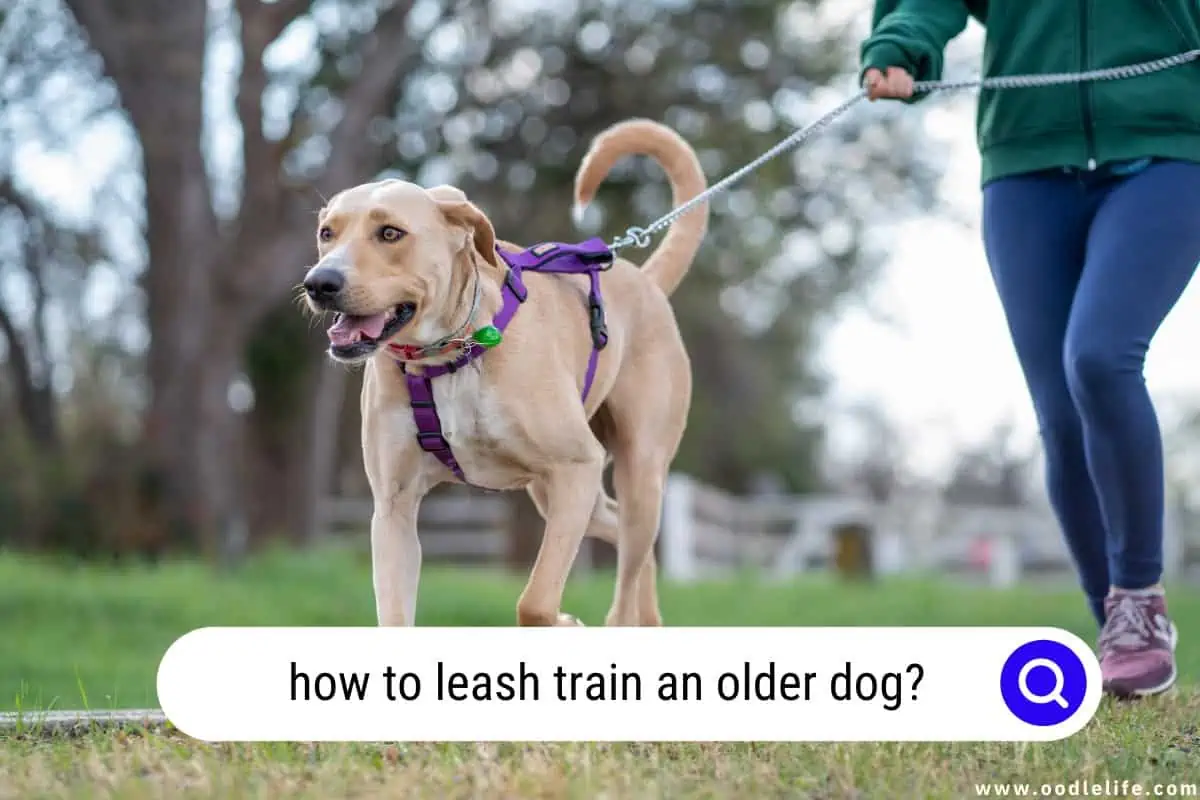
In this article, we’ll delve into helpful techniques and step-by-step instructions to leash train your older dog. By following these methods and adjusting your approach based on your dog’s needs and personality, you’ll lay the groundwork for enjoyable, stress-free strolls with your beloved canine companion.
Understanding the Importance of Leash Training
Leash training is not only essential for young pups, but it’s also important for older dogs. Many pet parents might wonder why they need to leash train their senior pets, and if it’s even possible. The truth is, it’s never too late to teach an old dog new tricks!
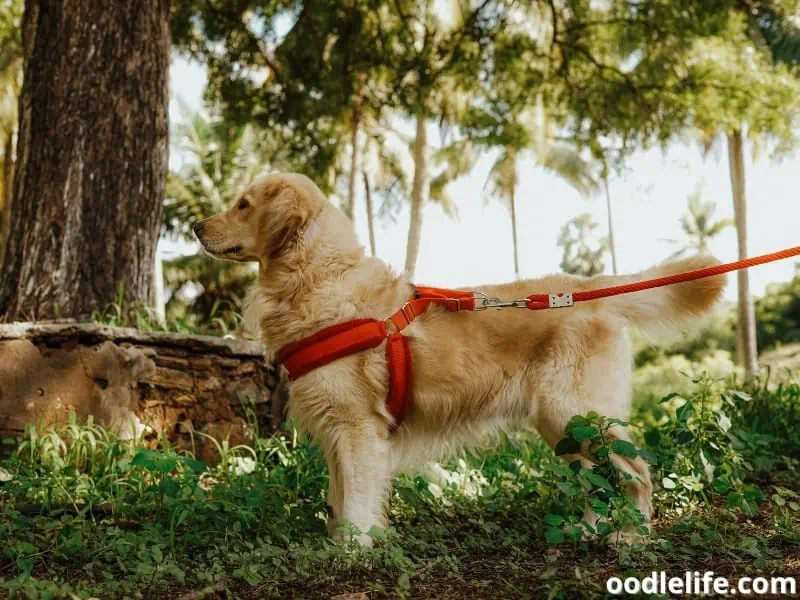
In this section, we will discuss the benefits of leash training an older dog, the significance of safety and obedience, and how it can help improve behavioral issues.
Benefits of Leash Training
Leash training an older dog has multiple benefits:
Regular exercise: All dogs, regardless of age, need regular exercise to remain stimulated, socialized, and fundamentally happy. Leash-trained dogs are more likely to enjoy their walks and give you a sense of accomplishment as a pet parent.
Better bonding: Consistent, positive experiences during walks can strengthen the bond between you and your furry friend. The more enjoyable and well-behaved your dog is on the leash, the more likely you are to take them for walks, leading to a closer relationship.
Boosts confidence: As an older dog becomes more comfortable and adept at walking on a leash, they gain confidence in navigating their environment. This can result in a calmer, more well-adjusted pet.
Safety and Obedience
Safety and obedience go hand in hand when it comes to leash training:
Staying close to you: A well-trained dog on a leash will stay by your side, ensuring they won’t wander off or get into dangerous situations, like running into traffic.
Proper leash length and type: Choosing the right leash (e.g., a training lead) can maximize safety and control. A short leash keeps the dog at your side, whereas a retractable one allows more freedom when it is safe to do so.
Redirection and control: Training your dog to obey your commands while on a leash enables you to redirect them away from distractions or potentially harmful situations.
Improving Behavioral Issues
Leash training can help address and improve various behavioral problems your older dog might have:
- Leash aggression: Some dogs become reactive or aggressive on the leash due to fear or frustration. Through consistent leash training, you can teach them to remain calm and well-behaved during walks.
Excessive pulling: Many older dogs may have developed a habit of pulling on the leash. With the right techniques and patience, you can teach your senior pet to walk calmly by your side.
In conclusion, leash training an older dog is crucial for their safety, obedience, and overall well-being. By dedicating time and effort to this important aspect of pet ownership, you can improve your dog’s quality of life and ensure they remain a well-mannered, well-adjusted companion.
Choosing the Right Equipment
Types of Collars
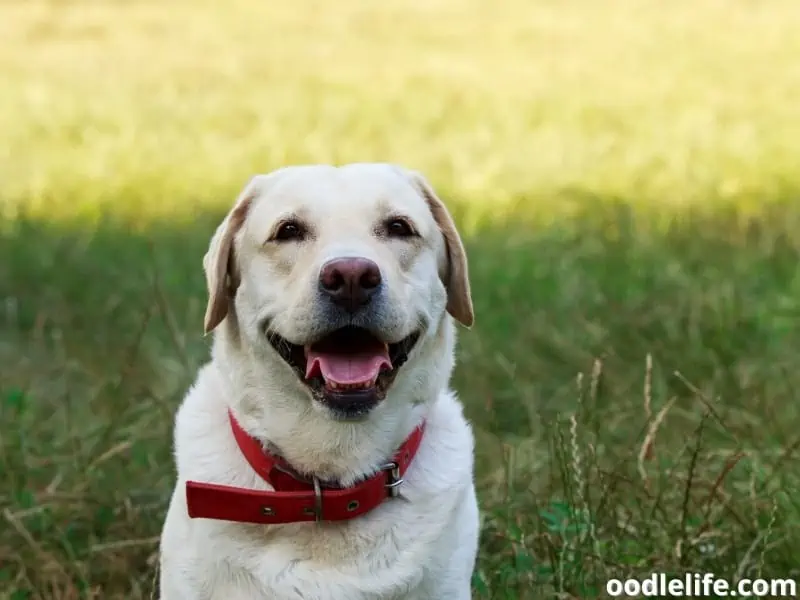
When it comes to choosing the right collar for your older dog, familiarize yourself with the main types:
Flat Collar: The most common type of collar, made of nylon or leather, and has a buckle or snap connector. Ideal for mild-mannered dogs.
Head Halter: This type resembles a horse’s halter and wraps around the dog’s muzzle. It helps control dogs with a tendency to pull or lunge.
Choke Chain: Made of metal links, this collar tightens when the leash is pulled. It’s best for strong dogs who require more control, but should be used with caution to avoid injury.
Shock Collar: Sends a mild electric shock for training purposes, but is generally not recommended for leash training.
Prong Collar: Features a row of metal prongs on the inside to discourage pulling. Use with care and guidance from a professional.
Types of Leashes
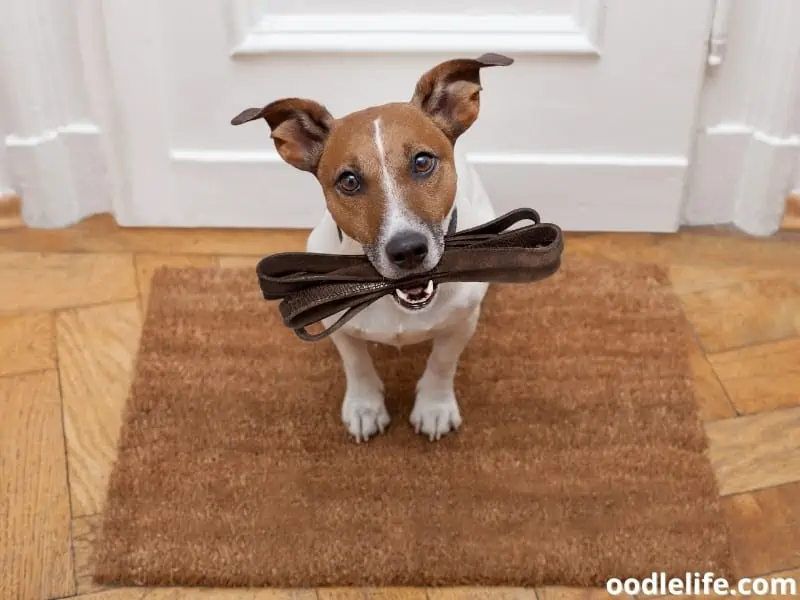
When selecting a leash, consider these options:
Standard Leash: Typically made of nylon or leather, these come in various lengths, with 4-6 feet being the most common for walks.
Training Leash: These longer leashes (10+ feet) allow for more freedom during training sessions. Great for practicing recall.
Retractable Leash: Provides extra length and is retractable, but can give your dog too much freedom if not used correctly.
Selecting a Harness
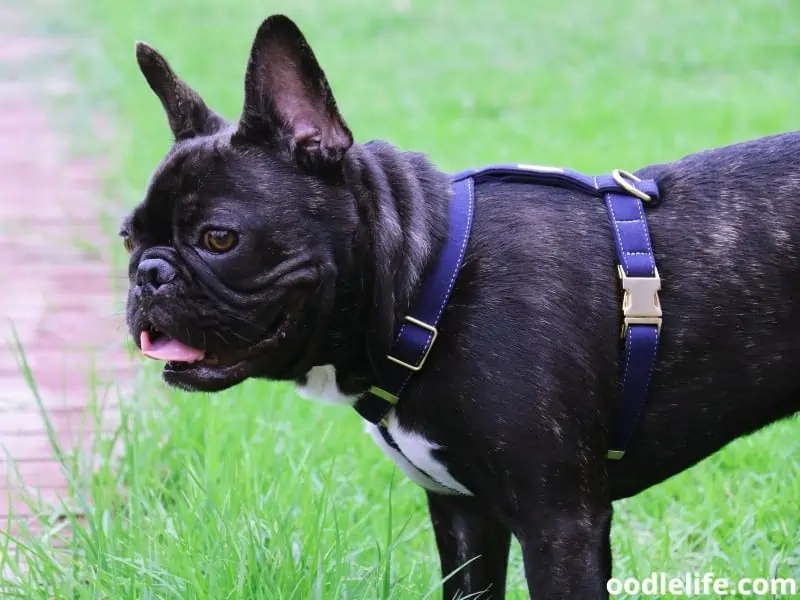
Harnesses can offer more control and discourage pulling. There are two popular types:
Front-Clip Harness: Clips to the chest area, providing better steering and control over your dog’s movements.
Back-Clip Harness: Clips to the back and is less prone to tangling, but may not offer as much control as a front-clip harness.
To sum it up, finding the perfect collar, leash, and harness combo for your older dog might take some trial and error, but the options are plentiful! Just remember to be patient, like a dog waiting for a treat, and you’ll have your pup walking comfortably in no time.
Preparing for the Training Process
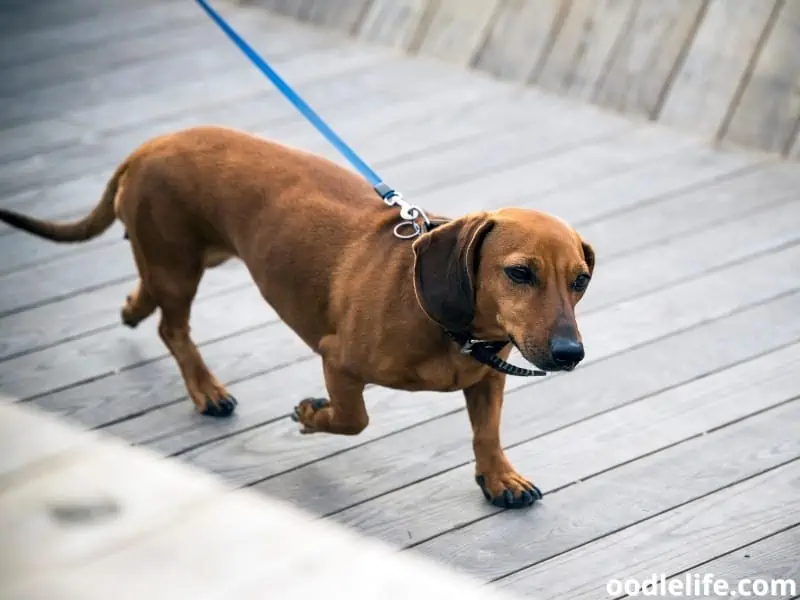
Setting Realistic Expectations
When it comes to leash training an older dog, it’s important to have patience and set realistic expectations. Remember, you can teach an old dog new tricks, but it might take a little more time than with a young pup. Older dogs may be set in their ways, and some can be stubborn or anxious when it comes to change.
Have a good-natured laugh when your senior canine companion gives you that “are you serious?” look, knowing that you’ll both get there, one step at a time.
Creating a Distraction-Free Environment
A key step in preparing for the training process is creating a distraction-free environment for your older dog. As we all know, dogs have a notorious attention span of squirrels on caffeine. To effectively train your dog, it’s essential to minimize distractions.
Choose a quiet area indoors where they can focus on your commands without being tempted by the irresistible aromas of something buried in the backyard. Think of it as your dog’s zen space where learning occurs, accompanied by treats as rewards, of course.
Scheduling Consistent Training Sessions
Consistency is king when it comes to teaching new skills to our beloved furry friends. Schedule dedicated training sessions at regular intervals, taking note that older dogs might require shorter sessions compared to their younger counterparts.
Here’s a recommended schedule for leash training sessions:
- Duration: 10 to 15 minutes
- Frequency: 2 to 3 times a day
Remember that patience and persistence are your best allies in this process. With a clear plan and a calm, confident approach, your older dog will soon be walking on a leash like a seasoned pro. Just think of all the lovely neighborhood strolls you’ll be taking together in no time!
Teaching Basic Leash Skills
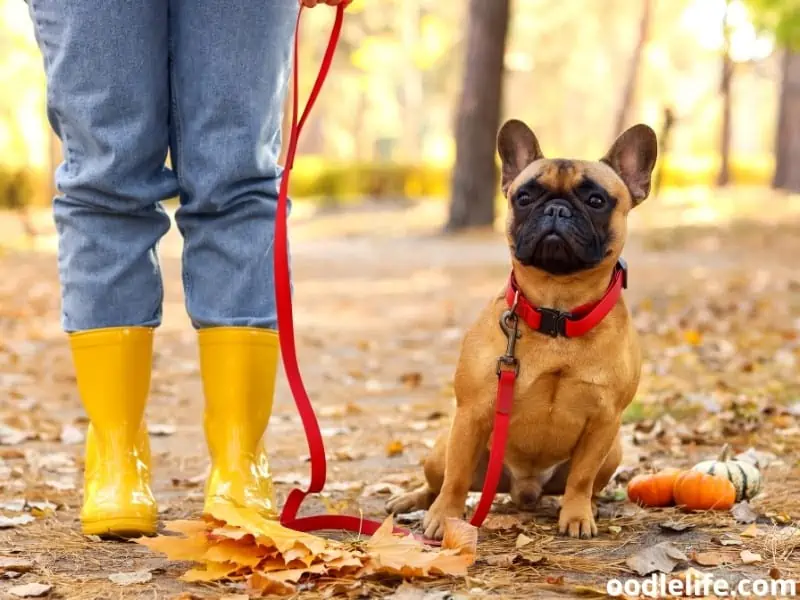
Leash Walking Techniques
Teaching your older dog basic leash skills begins with selecting the right kind of leash. A short training lead is recommended for effective communication and prompt correction of behaviors. Once you have a suitable leash, start by calmly putting it on your dog, and make sure they are relaxed and responsive to your commands.
When leash walking, maintain a loose leash to avoid putting unnecessary tension between you and your dog. Remember, consistency is key. Use clear, simple commands that your dog can understand, and stick to these commands.
Using Commands
Introducing the “heel” command is vital for establishing control during the walk. In a closed-off area, allow your dog to walk ahead of you, using the entire length of the leash. When the leash becomes taut, firmly say “heel” and gently tug the leash.
When your dog turns towards you, give them praise and a treat to positively reinforce the behavior.
Other useful commands include “sit” and “stay,” which can help them remain calm when encountering distractions, and “let’s go” for signaling the start of the walk.
Preventing Leash Pulling
To prevent leash pulling, it is essential to teach your dog that pulling will not get them what they want. Every time your dog pulls, immediately stop walking. This approach requires you to be mindful of your dog’s behavior during the walk, so stay focused and attentive.
An analogy for this method is imagining you’re teaching a dance; you want your dog to follow your lead. Maintain a conversational tone, use humor to lighten the atmosphere, but remain clear and knowledgeable.
By consistently practicing leash walking techniques, using commands effectively, and preventing leash pulling, your older dog will soon learn to walk calmly and happily by your side.
Using Positive Reinforcement
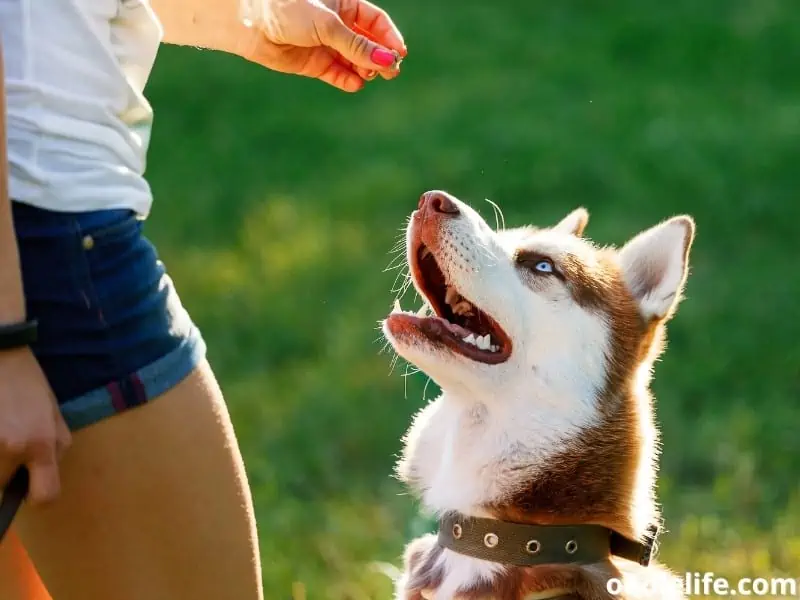
Rewarding Good Behavior
When leash training an older dog, it’s crucial to use positive reinforcement to encourage them.
Addressing Common Challenges
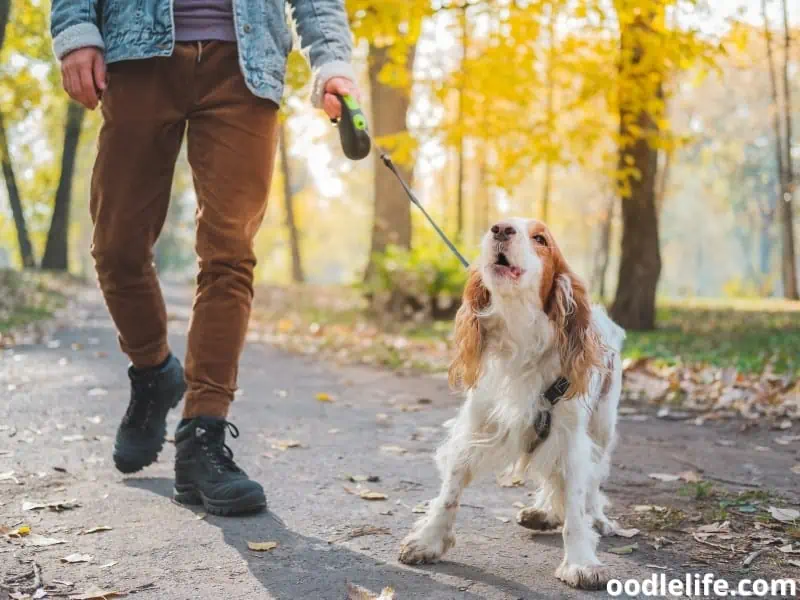
Dealing with Excitement and Distractions
Older dogs can get overly excited or easily distracted while on walks. For example, they might lunge at squirrels or bark at passing dogs. To address excitement, start by calming your dog down before attaching the leash and going on a walk.
It’s best to have a calm, composed older pup than a wildly energetic canine when venturing outside. Distraction-wise, practice training in quiet environments first to help your dog focus and keep a leash with a comfortable handle, which will help you control the situation.
- Reward calm behavior with treats and praise
- Gradually introduce distractions, starting with mild ones
- Be consistent with your commands and expectations
Correcting Bad Habits and Behavior
Older dogs may have already developed bad habits, like pulling on the leash or meandering off in random directions. To break these habits, patience and consistency are key. Here are some pointers:
- Establish and maintain a routine for walks
- Use treats and positive reinforcement for good behavior
- Utilize a no-pull harness to help discourage pulling
Remember, old dogs can learn new tricks; it just might take some extra time and effort.
Managing Anxiety and Stress
Finally, managing anxiety and stress can be a challenge when leash training an older dog. It’s essential to know your dog’s limits, so don’t force them into situations they’ll find too stressful. A leisurely stroll in the park might be more the dog’s speed rather than an action-packed adventure at a dog park.
- Learn the signs of stress in your dog and adjust accordingly
- Avoid sudden yanking or pulling on the leash that may cause distress
- Provide positive reinforcement for overcoming anxieties
As you progress through these challenges, remember that a patient, consistent approach will yield better results than trying to force your older dog into new habits overnight. So take it one walk at a time, and you’ll find leash training an older dog to be quite manageable.
Additional Training Considerations
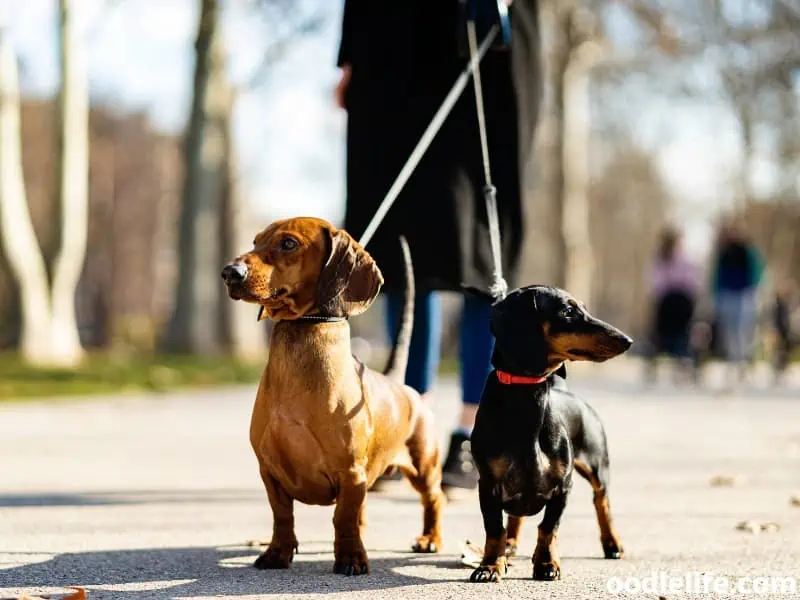
Ensuring Proper Exercise
Whether you’ve recently adopted an older dog or have a dog that has been with you for a while, leash training is an essential skill. Just as with puppies, adult dogs require plenty of exercise, regardless of their age or breed. Plan a daily walking routine to ensure that your dog gets the physical and mental stimulation they need.
For larger breeds, consider increasing the walk duration, but also attend to any special limitations they may have due to their size and age.
Adapting Techniques for Adult Dogs
Don’t be discouraged by the myth that “you can’t teach an old dog new tricks”; older dogs can still learn leash manners with a few adjustments in the training methods. When choosing the right leash for your adult dog, opt for a larger and thicker one, preferably a high-quality leather leash that provides the necessary control.
Instead of the traditional obedience training often used with puppies, incorporate patience and understanding when leash training an older dog. Introduce the leash and harness calmly, giving your dog time to acclimate to the new tool. If your dog is overly enthusiastic, try taking them to the door as if going for a walk, then return inside if they become too excited.
Repeat this process until they can leave the door calmly.
Consulting a Professional if Needed
If you find that despite your best efforts, your older dog struggles with leash training, it may be necessary to consult a professional. Don’t hesitate to reach out to a local dog trainer or a veterinarian for advice. They can provide tailored solutions to help your dog become more disciplined on the leash or address any underlying health concerns that may be affecting their ability to walk properly.
Remember, it’s never too late to teach your dog good leash habits, and a little patience and persistence can make a world of difference in the long run. Plus, the bonding experience between you and your older pooch will only grow stronger with these walks, so embrace the journey and step out in confidence — one paw-some walk at a time!
Conclusion
Leash training an older dog may seem like a daunting task, but with patience, consistency, and the right approach, it can be accomplished. Remember, it’s never too late to teach an old dog new tricks.
Start by getting a high-quality leather leash that is larger and thicker, as older dogs may require more control. Introduce the leash gradually, allowing your dog to acclimate to this new tool. Reinforce good leash behavior with praise and treats, providing a positive and rewarding experience for your dog.
While walking, keep the leash loose, allowing your dog some freedom to sniff and explore. However, maintain a close proximity to ensure they remain attentive and check in with you periodically. Establishing a pattern and practicing regularly will help solidify these leash manners.
Humor can be your best friend during this process; for example, when your dog starts pulling on the leash, remind them that they are not a sled dog, and save the mushing for another day. Additionally, analogies like the “invisible bubble” can help you visualize the desired walking space between you and your dog.
In summary, be patient, persistent, and use a variety of techniques to show your older dog that leash walking is a fun and rewarding experience. Soon enough, you’ll both be enjoying leisurely strolls through the neighborhood, feeling secure in your dog’s newfound leash manners.